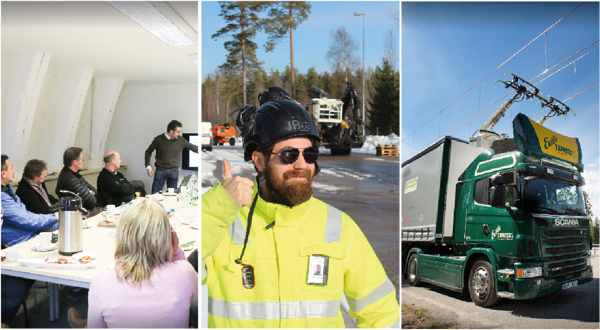Improved reference group-approach for innovation governance processes in Gävleborg, SE

Region Gävleborg shared their Good Practice of enhanced use of reference groups for stakeholder governance in innovation processes with the EmpInno partners.The region built the first Electric Road System (ERS) in the world on a public highway for heavy transport 2016 (E16 outside Sandviken). Building the ERS has required collaboration between many stakeholders from the public sector, the business sector and the academy in a triple helix context. One of the most important parts of the collaborative leadership has been the involvement of the reference groups in the innovation process.
Reference groups have been a standard tool of project management for decades, but are seldom used to its full potential. The involvement of reference groups in the ERS innovation process has taken the tool to another level and is now a central part of the stakeholder governance. The reference groups are divided into certain areas of expertise for example risk analysis, road security, emergency rescue, business models. The core work group with the central stakeholders is called “the family”. Each of the participants has been handpicked which has been a prerequisite for successful use of reference groups. The motivation and driving forces behind every participant have been analysed to create win-win for everyone. A long term relation trust building approach is used by an open and transparent way of informing and discussing what is going on in the project. By being personally chosen to a workgroup where creative input and critical questions from everyone is valued the stakeholders feel included in the innovation process.
The results have been critical contributions of knowledge, supporting attitudes to the innovation process and the stakeholder´s addition to the projects storytelling about the ERS as an important break-through for a more sustainable transportation system that creates a more profitable business for everyone. Nearly half of the carbon dioxide emissions in the region of Gävleborg come from transportation and most of all from heavy transportation connected to the industry. A full scale ERS deployment on proper roads creates a “green transportation system” and will have a substantial effect on the carbon dioxide emissions. The electricity in the region is nearly 100 % fossil free. Many of the actors in the reference groups therefore have a sense a pride for being a part of a world breakthrough innovation process with a potential for a structural transformation.
Further information: http://www.regiongavleborg.se/elvag
Copyright © Region Gävleborg
